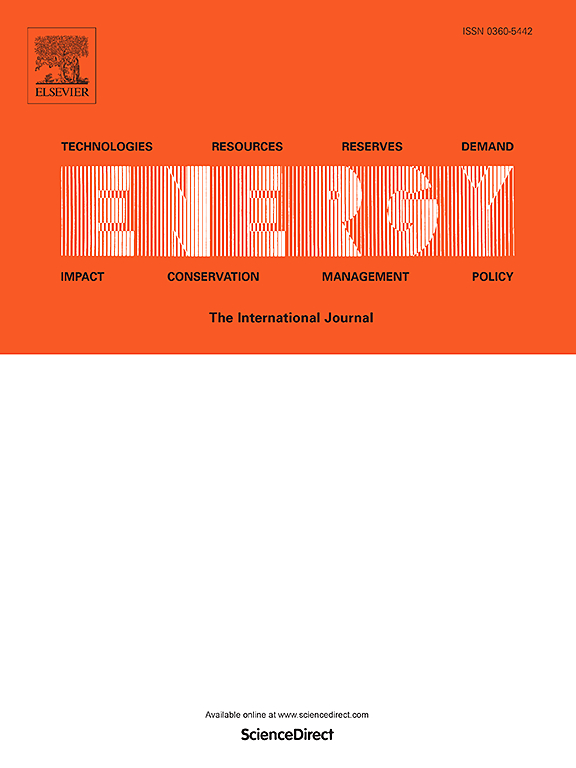Thermodynamic and safety analysis for hydrogen production in a supercritical water gasification system of coal by multi-oxidizers distribution
IF 9
1区 工程技术
Q1 ENERGY & FUELS
引用次数: 0
Abstract
Coal supercritical water gasification (SCWG) for hydrogen production technology is highly prospective due to the clean and efficient treatment process. A single oxidation reactor heating method is usually used in existing work limiting the efficient and stable operation of the system due to high component temperatures. This paper proposed the heat supply strategy of multi-oxidation reactor and heat exchanger layout to improve the system performance for the realization of reasonable matching of material flow and energy flow in each stage of the system. The improved system reduced the maximum temperature of the oxidation reactor from 1550 °C to 850 °C, and the system exergy efficiency and H2 yield reached 49.30 % and 101 kg/h (at the mass ratio of coal to water of 1:10), respectively. The exergy flow results showed that the improved system exergy loss was concentrated in the oxidation reactor (34.00 %) heat exchanger (28.86 %), cooler (19.07 %), and gasification reactor (9.70 %). Exergy efficiency increased as the mass ratio of coal to water increased to the maximum exergy efficiency of 53.50 %. As the temperature increased from 600 °C to 675 °C, the exergy efficiency decreased from 53.10 % to 48.70 %. System adjustability analysis showed that the system can be stabilized over a 40 %–100 % range of feed fluctuations. This work may provide an optimization strategy for efficient operation and dynamic safety regulation of H2 production by SCWG technology.
多氧化剂分布煤超临界水气化制氢热力学及安全性分析
煤超临界水气化制氢技术因其清洁高效的处理工艺而具有广阔的应用前景。现有工作中通常采用单氧化反应器加热方式,由于元件温度高,限制了系统的高效稳定运行。本文提出了多氧化反应器的供热策略和换热器布置,以提高系统性能,实现系统各阶段物料流和能量流的合理匹配。改进后的系统将氧化反应器的最高温度从1550℃降低到850℃,系统的火用效率达到49.30%,H2产率达到101 kg/h(煤与水的质量比为1:10)。火用流结果表明,改进后的系统火用损失主要集中在氧化反应器(34.00%)、换热器(28.86%)、冷却器(19.07%)和气化反应器(9.70%)。随着煤与水质量比的增加,火用效率也随之提高,最大火用效率为53.50%。当温度从600℃升高到675℃时,火用效率从53.10%下降到48.70%。系统可调性分析表明,系统可以稳定在40% - 100%的进给量波动范围内。该研究可为超临界超临界制氢技术的高效运行和动态安全调控提供优化策略。
本文章由计算机程序翻译,如有差异,请以英文原文为准。
求助全文
约1分钟内获得全文
求助全文
来源期刊

Energy
工程技术-能源与燃料
CiteScore
15.30
自引率
14.40%
发文量
0
审稿时长
14.2 weeks
期刊介绍:
Energy is a multidisciplinary, international journal that publishes research and analysis in the field of energy engineering. Our aim is to become a leading peer-reviewed platform and a trusted source of information for energy-related topics.
The journal covers a range of areas including mechanical engineering, thermal sciences, and energy analysis. We are particularly interested in research on energy modelling, prediction, integrated energy systems, planning, and management.
Additionally, we welcome papers on energy conservation, efficiency, biomass and bioenergy, renewable energy, electricity supply and demand, energy storage, buildings, and economic and policy issues. These topics should align with our broader multidisciplinary focus.
 求助内容:
求助内容: 应助结果提醒方式:
应助结果提醒方式:


